This Shop Shines...And Sorts, Simplifies, Standardizes And Sustains
The 5S principles are proving to be a powerful prelude and prerequisite to lean manufacturing at this aerospace job shop.
Share





What is 5S? It’s a list of words, all starting with S, that describes a method of organizing a workplace. Not everyone agrees on the same five words, however, so several versions of the list are widely used. This discrepancy seems to stem from the fact that 5S is based on a translation of five Japanese words, some of which can have several meanings. In Japan, 5S originated as part of the famous Toyota production system, which is noted for its efficiency and lack of waste. Regardless of the exact words, proponents of 5S all agree that it is a powerful but practical approach for transforming a shop or factory.
At Merritt Tool Co. in Kilgore, Texas, 5S stands for:
SORT
SHINE
SIMPLIFY
STANDARDIZE
SUSTAIN
This job shop sorts, shines, simplifies, standardizes and sustains very well. Both the practice and the benefits of 5S are abundantly evident at this 65-person shop located deep in the piney woods region of East Texas. 5S has prepared Merritt Tool for lean manufacturing. More accurately, 5S is propelling this shop toward lean manufacturing.
In fact, a good way to understand the concept of lean manufacturing is to perceive it as the next step after or the natural consequence of reaching the state that Merritt Tool has achieved by implementing 5S. For example, the shop is already rearranging machine tools into cells, a move that clearly makes sense now that it has been following 5S throughout it plant. 5S brings out the logic of lean. It is a “lean enabler.”
| 5S BENEFITS |
| —Improved safety —Higher quality —Lower costs —More reliable deliveries —Reduced setup and changeover time —Better use of floor space —Fewer maintenance issues —Greater operator job satisfaction |
| Fig. 1—5S is not a cure-all, but its effects are far-reaching. |
Larry Simmons, general manager and the main 5S guru at Merritt Tool, has a more down-to-earth view of all this. “It’s a way to help people get more done by working half as hard so that the company can make more money,” he says. This view is enthusiastically shared by A.P. Merritt, Jr., president of Merritt Tool and son of the founder. When Mr. Simmons was introduced to the concepts of 5S several years ago, he could see how the techniques could help the shop reduce setup time by as much as 50 percent. That’s all he needed to say to convince Mr. Merritt that 5S was well worth his support.
Today, it is easy to see how 5S has reduced setup time and delivered other benefits at Merritt Tool. The shop is remarkably uncluttered. Almost at a glance, a casual visitor can tell what is going to happen next at each workstation and how it is going to be done. In fact, this visual aspect of 5S is one of the key characteristics of its methodology. Looking, seeing and making things visible are part of almost every activity related to 5S. (See Figure 1 for a summary of 5S benefits.)
| Keys to 5S Success |
| —Get everyone involved. —Integrate 5S into daily work. —Communicate the need for 5S, the role of participants and how 5S is implemented. —Be consistent in following 5S in all areas. —Keep senior management involved. Their commitment is absolutely required. —Follow through. Finish what is started. —Link 5S to kaizen (continuous improvement) activities. |
| Fig. 2—TechSolve, a consulting group that helped introduce Merritt Tool to 5S, includes this list with the 5S advice it gives its clients. |
The Journey Begins
Merritt Tool began moving to lean manufacturing about 5 years ago, at the urging of The Boeing Company, one of the shop’s main customers. Although Merritt Tool was originally founded in 1928 to serve the oil field industry, it branched into aerospace work in the 1980s. Most of its machine tools are now multi-axis CNC types suitable for aerospace workpieces in aluminum and titanium. It also continues to serve the oil field and other industries, especially in lathe work.
Merritt Tool became involved with lean manufacturing techniques in 1998, when the company participated in a Lean Pathways program sponsored by the U.S. Navy and The Boeing Company as part of an initiative to improve quality, delivery and affordability of components for Navy aircraft. As part of this program, Mr. Simmons participated in several accelerated improvement workshops (kaizen events) and was certified as a workshop leader in 2000. TechSolve, the Cincinnati-based manufacturing consulting group that developed the Pathways process, teamed with Merritt Tool, Boeing and the Navy in conducting 5S as well as other improvement workshops on-site at Merritt Tool.
Under Mr. Simmons’ guidance, Merritt Tool followed all of the recommended practices for implementing 5S, including the recommendation to make practical compromises and adaptations where necessary. “In a job shop, you have to use discretion and common sense,” Mr. Simmons says. “The main thing is to understand the concepts and principles of 5S, then devote time and resources to applying them. A half-hearted commitment to 5S is doomed to fail.” (See Figure 2 for further tips on making 5S successful.)
Mr. Simmons is clear about one point: “5S has been successful here mainly because our employees wanted it to succeed. Their hard work and dedication have been the biggest factors in making this work,” he says. Regarding his role, Mr. Simmons says it was “mainly to point the way.”
In the beginning, Mr. Simmons conducted workshops at specific locations in the plant, usually centered on a particular machine tool or process area. A typical workshop lasts 2 to 5 days. The first step is forming a team consisting of the machine operators and other personnel involved with activities related to the workcenter.
“It’s a good idea to have individuals from other departments or areas on the team,” Mr. Simmons recommends. “This gives us some fresh eyes that see things differently.” Workshops usually open with some simple team building experiences, even if this is just coffee and donuts for the group at the beginning of the day.
Before the team meets, activities at the workcenter, such as routine setups, are recorded on videotape. The videotaping is intended to capture “as is” procedures and practices. “We keep the focus on the activities, not the individuals,” Mr. Simmons explains. He says this focus is important so that participants do not become self-conscious or uncomfortable.
On the first day of the workshop, the group gathers in a classroom to review the videotape. They look for anything that causes waste. The group makes suggestions for reorganizing the work area and setup procedures. The end result is a plan that the “owners” of the workcenter carry out, drawing on the resources and expertise of the team. The plan includes a timetable, a list of objectives and expectations, and task assignments.
The team meets again to review progress and make additional suggestions. At the conclusion, workshop participants report to the company president to show off the results of the workshop in action. A 50-percent reduction in setup time is the usual goal of a workshop, and Mr. Simmons reports that this goal is rarely missed.
A Place For Everything And Everything…Is Labeled
Because they change the physical appearance of the shop, the results of the first three S’s in 5S are the easiest to detect. A walk-through at Merritt Tool demonstrates the effects of conscientious efforts to Sort, Simplify and Shine.
Sorting, according to Mr. Simmons, is the process of separating the necessary from the unnecessary. Necessary items are organized; unnecessary items are removed and disposed of. Simplifying is mostly a matter of arranging things carefully and identifying them with labels.
Items used every day are kept at their point of use. Shadowboards, such as the one shown in Figure 3, are common. These shadowboards represent a number of 5S principles thoughtfully applied.
First, only tools and items used regularly are shadowboarded. The shadowboards are placed so that tools are only one or two steps away from the operator’s reach, with heavy pieces placed lower than the easier-to-lift items. Tools that come in different sizes, such as wrenches or gages, are grouped in order by size for quick identification.
Second, shadowboards demonstrate the value of visual clues. An empty spot indicating a missing tool is obvious. All items are clearly labeled. Labels not only identify the tool but also record vital information regarding size, specifications, maintenance notes, and details about calibration or inspection.
Tools, gages, instruments and other items not used on a daily basis (but generally used once a week or so) are stored in the work area in cabinets, such as the one shown in Figure 4. Mr. Simmons is quick to point out that all of the cabinet doors have front panels of clear acrylic plastic. “See-through doors mean there’s no place to hide junk, and nobody has to guess what’s inside,” he says. Even so, cabinets and their contents are clearly labeled. Drawers in filing cabinets are also labeled. The contents of each drawer are listed on the front.
This preoccupation with sorting and simplifying may seem intrusive, but Mr. Simmons says the shop recognizes that employees are entitled to their personal space at their work area. “There’s always room for family photos or snapshots of the favorite hunting dog, motorcycle or hunting trophy,” he says. On the other hand, what was once considered a personal tool to be stashed in a locked toolchest has now been replaced by a company-owned tool stored in a public place (appropriately labeled, of course). This policy is necessary to maintain visibility and accessibility. There are no locks on tool cabinets or storage areas, implying a level of trust in responsible behavior.
Cleanliness Is Next To…Profitability
It is no exaggeration to say that shop areas at Merritt Tool really shine. To shine is a vital part of 5S. Sometimes this “S” is given as “Sweep” or “Sanitize” rather than “Shine,” but shine is most appropriate in this case. As part of its 5S initiative, Merritt Tool stripped and repainted floors with a glossy, wear-resistant coating. The light color not only brightens the shop area, but it also makes stray chips and dirt more apparent. Likewise, machine tools and work areas were thoroughly wiped down. Some machines were repainted; others were touched up to cover scratches and wear.
In several cases, Mr. Simmons had machine enclosures modified for better containment of chips or coolant splashes. In other cases, he had hydraulic lines at the back of a machine reworked to get them off the floor and under cover because these “snake pits” were prone to accumulated dirt and chips and presented an untidy appearance. Leaks or other problems are now also easier to detect.
None of this was mere fussiness. As Mr. Simmons points out, cleanliness has many functions. Cleanliness:
- creates a more comfortable and safer work environment;
- leads to greater visibility to reduce search time;
- promotes a higher quality of work and products;
- simplifies maintenance; and
- creates a positive impression for visitors and customer inspections.
“Sweep” is another good word to use in this context. It has two important meanings in Mr. Simmons’ perspective. One is “sweep” in the sense of using a broom or mop. Operators clean their own equipment and working area. Mops and other cleaning supplies are stationed in a designated, clearly labeled area as shown in Figure 5. According to Mr. Simmons, Merritt Tool has only one employee assigned to general housekeeping duties. Most of these duties are devoted to aisles, offices and public areas in this plant of approximately 63,000 square feet.
Another meaning for “sweep” is the act of scanning an area visually. Shop employees are expected to do this sweep at least once a day. Time for sweeping is accounted for in the shop’s daily schedule, too. The idea is to notice missing or out-of-place items, to spot clutter and to check for dirt or grime that might indicate a problem requiring correction.
Mr. Simmons in especially watchful of flat surfaces on top of cabinets or equipment. “Flat surfaces attract clutter,” he says. “They are a temptation to lay down a wrench or calipers where they may be in harm’s way or cause harm.”
Finally, cleanliness has a good public relations value. As customers have become choosier about their suppliers, plant tours are a more common occurrence. “We love to have them come in,” Mr. Simmons declares. “And we don’t need a half a day to tidy things up before they arrive.”
Documenting The Right Way To Do Things
Developing standards is an important part of 5S. As practiced at Merritt Tool, Mr. Simmons says that standards are essential for properly maintaining the first three S’s as a habit. “It’s become part of our culture,” he says. Thus, Standardize, the fourth “S,” goes hand in hand with the fifth “S,” Sustain.
As a principle of 5S, to standardize essentially means documenting procedures for shining/sweeping/sanitizing a work area. As Mr. Simmons sums it up, “We’re big on checklists.” Checklists are posted where operators can refer to them easily. See Figure 6. A good checklist spells out:
- who is responsible;
- what actions must be taken to maintain conditions;
- when those actions must be taken;
- where they apply; and
- what procedures will be followed to ensure compliance.
As part of the effort to standardize, documenting procedures often includes digital photos of “should be” conditions. These pictures make it easy to see what a work area looks like in its cleanest, most efficient shape. These visual reminders remove the guesswork about what 5S is meant to accomplish.
The emphasis on documentation and standardization has another value that Mr. Simmons points out. “It’s great practice for developing the habits essential to establishing standard operations as part of lean manufacturing,” he says. For example, the binders containing all of the documentation that establishes a standard operation (such as a streamlined setup procedure) reflect many of the same concepts and disciplines embodied in a 5S standard for workplace organization.
Keeping The Spirit Alive
The last “S” in 5S stands for Sustain. It may be the most important of all. Mr. Simmons has a very specific definition for “sustain” in the context of 5S. “It’s more than just maintaining new habits and not backsliding into old ones,” he says. In other words, it is a dynamic process. 5S is not something a shop attains and then declares, “Mission accomplished.” It’s an ongoing effort to sort more effectively, simplify further, sweep more thoroughly and keep standards up to date. Even the effort to sustain has to be continually refined and renewed.
Both operators and managers have to do their parts. On the shop floor, self-discipline is a key aspect of sustaining 5S. According to Mr. Simmons, operators do their own self-assessments. At the end of each shift, they automatically go through their checklists and make sure everything is back in order. The benefits and habits are self-rewarding, too. 5S makes life easier and easier if it is practiced conscientiously.
Sharing ideas for improvements is also a habit that needs to be cultivated. Changes have to be agreed upon, so teamwork and consensus are essential. These factors are reinforced by the emphasis on keeping standards up to date.
Managers, in turn, have a responsibility, one that Mr. Simmons takes very seriously. For example, he regularly conducts his own sweep of the shop to monitor compliance with 5S throughout the workplace. “My role isn’t to be a policeman,” he explains. “It’s more to be a coach and mentor, the chief motivator.” For these sweeps, he relies on the same checklists that the operators follow. That way, there is no doubt about what the expectations and goals are for each individual.
Because recognizing and rewarding good work help to sustain not only diligence but also morale, Mr. Simmons is looking at an incentive program to bolster the 5S initiative. He doesn’t believe, however, that an incentive program should be considered until after 5S is thoroughly implemented and well established. Otherwise, the incentives, rather than the natural benefits of 5S, become the focus. “5S should always be its own reward,” he says simply.
Mr. Simmons credits the company president’s commitment to 5S as a key to its success. A. P. Merritt has provided not only encouragement, but also the resources for 5S implementation. “A. P. gives me the budget and the work hours needed for 5S,” Mr. Simmons explains. “More important, he’s personally involved.” Mr. Merritt attends the final report sessions at the conclusion of 5S workshops, for example.
Finally, both Mr. Simmons and Mr. Merritt agree that sustaining 5S ultimately depends on the perseverance of the company’s workforce. “What you see here reflects the hard work, imagination and commitment of the people in the shop,” Mr. Simmons says. “They make it happen. 5S belongs to them.”
Lean And Getting Leaner
The link between 5S and lean manufacturing is clear at Merritt Tool. Mr. Simmons cites just a few examples. “We’ve established standard operations for most of our demanding jobs. We’ve experienced some very successful setup reduction projects. We’re starting to create machining cells. We’ve significantly reduced inventory and leadtimes on most long-running jobs as well.”
The essence of standard operations (or “standard work,” as it is sometimes called in lean manufacturing lingo) is represented by a binder containing all of the documentation that describes, in detail, how an operation is set up and carried out. A typical binder for an aerospace job contains setup diagrams, checklists, photos of fixtures and clamping arrangements and, in many cases, hand-written pages that capture the detailed notes of the operator. (See Figure 7.) According to Mr. Simmons, the need for and the value of such documentation was easier to establish after everyone was familiar with 5S standardization.
The link between 5S and setup reduction is prominent. Most of the time lost in setup is attributable to the very things 5S helps to fix: searching for tools or fixture pieces, retrieving items from a remote toolroom, reinterpreting drawings or setup sheets, and so on. Once these obstacles are resolved, Mr. Simmons explains, other setup reduction strategies yield greater results more quickly, and the savings are easier to retain from operation to operation. “Here is where 5S really pays for itself,” he says.
5S is a catalyst for cellular manufacturing, too. The lathe area at Merritt Tool provides an example. “Once we had applied 5S, had standard operations in place and setup time reduced, we could visualize the flow of work more clearly,” Mr. Simmons explains. By moving machines into one area, the shop accelerated that flow, cutting leadtimes significantly. Other cellular arrangements are now being studied, based on the positive results from this first cell.
Does Fun Start With S?
Given the intense pressure on manufacturing in the United States, 5S and other lean manufacturing techniques are more urgent than ever. This reality is certainly not lost on Merritt Tool. Nonetheless, Mr. Simmons acknowledges that shops should not overlook the potential for 5S to create some fun in the workplace.
“5S is serious business, but it offers numerous opportunities for people from different parts of the company to get together, work as a team and share pride in accomplishing improvements that benefit the whole company,” he says. Working in a clean, well-organized and efficient workplace, which is what 5S is all about, adds to the quality of life as well.
That 5S leads to lean is clear enough at Merritt Tool. That 5S has a lighter side is all the more to recommend it.
Related Content
In Moldmaking, Mantle Process Addresses Lead Time and Talent Pool
A new process delivered through what looks like a standard machining center promises to streamline machining of injection mold cores and cavities and even answer the declining availability of toolmakers.
Read MoreDN Solutions Responds to Labor Shortages, Reshoring, the Automotive Industry and More
At its first in-person DIMF since 2019, DN Solutions showcased a range of new technologies, from automation to machine tools to software. President WJ Kim explains how these products are responses to changes within the company and the manufacturing industry as a whole.
Read MoreManufacturing Madness: Colleges Vie for Machining Title (Includes Video)
The first annual SEC Machining Competition highlighted students studying for careers in machining, as well as the need to rebuild a domestic manufacturing workforce.
Read MoreFinding Skilled Labor Through Partnerships and Benefits
To combat the skilled labor shortage, this Top Shops honoree turned to partnerships and unique benefits to attract talented workers.
Read MoreRead Next
5 Rules of Thumb for Buying CNC Machine Tools
Use these tips to carefully plan your machine tool purchases and to avoid regretting your decision later.
Read MoreSetting Up the Building Blocks for a Digital Factory
Woodward Inc. spent over a year developing an API to connect machines to its digital factory. Caron Engineering’s MiConnect has cut most of this process while also granting the shop greater access to machine information.
Read MoreBuilding Out a Foundation for Student Machinists
Autodesk and Haas have teamed up to produce an introductory course for students that covers the basics of CAD, CAM and CNC while providing them with a portfolio part.
Read More












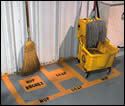
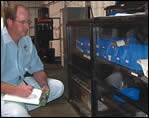

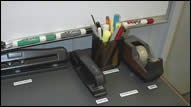
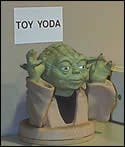

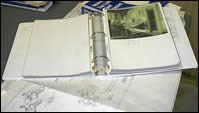

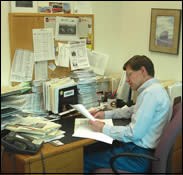







.jpg;maxWidth=300;quality=90)










